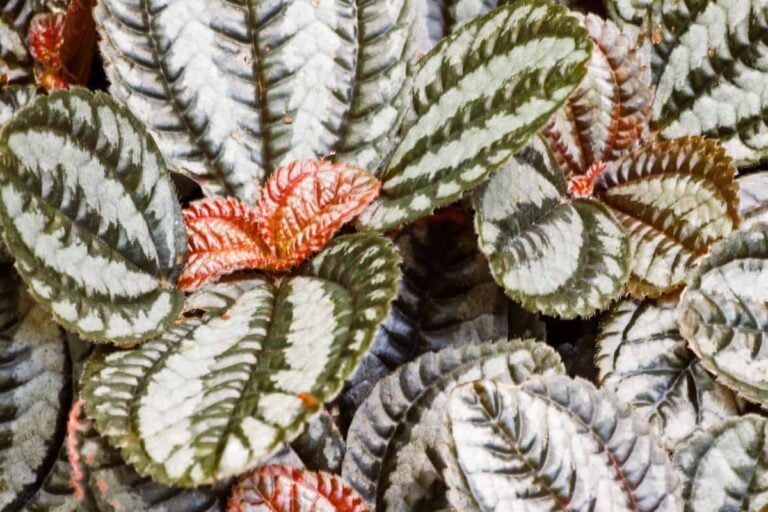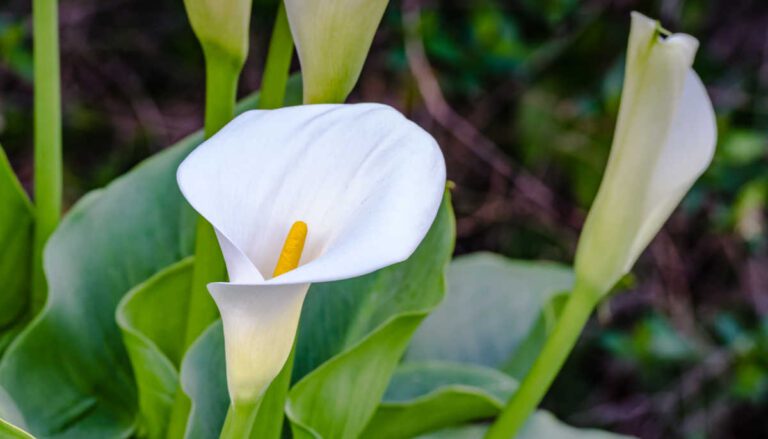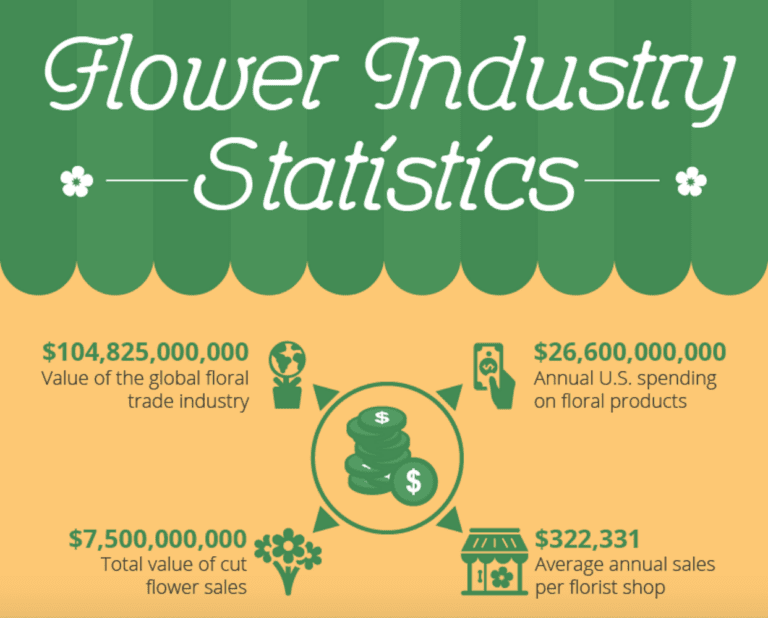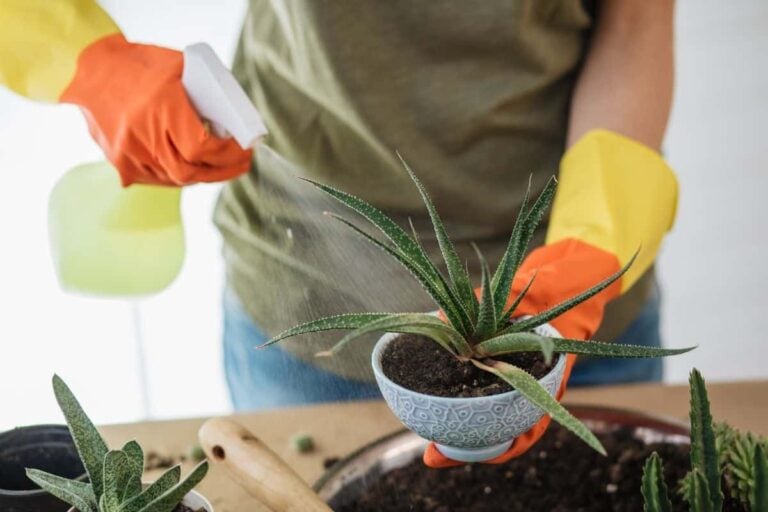13 Best Evergreen Climbers
We understand the struggle of trying to find the perfect plat to finish your garden oasis. Whether it’s for the front or backyard, you want something that’s going to give color, be low-maintenance, and look fantastic.
When you think you’ve finally found the perfect plant, fall arrives. The plant drops its leaves and goes into winter stasis, never to show any signs of life until the next spring.
That’s the natural way of things. Seasons may change and flowers stop blooming to save energy, but you don’t want to be left with a brown, dead-looking vine or plant making the rest of your garden look unkempt and messy until March.
So, what’s the answer? Dig it up every fall and buy a new one every spring? Of course not. We all have better things to do. What you need is an evergreen plant that keeps its color and looks genuinely alive all year round.
For your benefit, we have compiled a list of 13 of the best evergreen climbing plants so your trellis or pergola will be neatly decorated in draping foliage from Christmas to Labor Day.
Quick Comparison: Top Picks For Evergreen Climbers
[wptb id="507873" not found ]AT A GLANCE: Our Top Picks for Evergreen Climbers
- Our Top Pick: Evergreen clematis (Clematis Armandii)
- Akebia quinata (Fiveleaf Akebia)
- Gelsemium sempervirens (Carolina jasmine)
- Pandorea jasminoides (Pink Bower vine)
- Trachylospermum jasminoides (Star jasmine)
- Ficus pumila – (Creeping Fig)
- Jasminum polyanthemum (Pink jasmine)
- Ipomea acuminata ‘Blue Dawn’ (Blue Dawn Morning Glory)
- Bignonia capreolata ‘Tangerine Beauty’ (Tangerine Beauty Crossvine)
- Garrya Elliptica (Silk Tassel Bush)
- Photinia Red Robin
- Passiflora caerulea (Passion Flower)
- Climbing Hydrangea Seemannii
1. Evergreen Clematis (Clematis Armandii)

There is one clematis that is cold resistant and hardier than the other varieties. It’s called Clematis armandii and is evergreen in USA zones 7-9.
2. Akebia Quinata (Fiveleaf Akebia)
This is a spring-flowering evergreen or semi-evergreen climber with a deep purple bloom. Recommended for USA zones 5-9, it will be happy in full or part sun.
It is a fast grower when it gets going in the spring and can easily provide coverage for arbors or pergola structures.
3. Gelsemium Sempervirens (Carolina Jasmine)

The sweet-smelling flowers bloom in winter and spring, making it a valuable flash of color for your garden when little else is flowering.
4. Pandorea Jasminoides (Pink Bower Vine)
This climbing vine is a summer bloomer with rose pink trumpet-style flowers. It’s suitable for more temperate climates, such as USA zones 9-11. In mild climates, it will keep its bright green leaves all year.
5. Trachylospermum Jasminoides (Star Jasmine)
Happy in zones 8-11 and in part or full sun, this climbing vine holds classic white jasmine blooms that resemble stars (hence the name).
The blooms are delicately fragrant too, which is always a bonus with a flowering plant. The deep green of the glossy leaves provides the perfect backdrop to the bright, white flowers.
6. Ficus Pumila – (Creeping Fig)

Dark, green variegated leaves cover this plant, making it a perfect privacy partition. It should climb on just about any surface and likes full sun.
7. Jasminum Polyanthemum (Pink Jasmine)

The fragrance is stunning, as with many jasmine flowers, and it will be happy just about anywhere as long as it’s in full sun. Happiest in USA zones 8-10.
8. Ipomea Acuminata ‘Blue Dawn’ (Blue Dawn Morning Glory)

9. Bignonia Capreolata ‘Tangerine Beauty’ (Tangerine Beauty Crossvine)

The flowers are unique and utterly beautiful. They would be quite well-placed to be pictured as a drinking receptacle in a movie about fairies or sprites, given their shape.
It’s quite hardy and is happy in zones 6-9. If you’ve got the right climate for this stunner, then you can’t go far wrong with a tangerine beauty.
10. Garrya Elliptica (Silk Tassel Bush)

This evergreen covering climber does well in dry, shady areas such as against walls.
11. Photinia Red Robin

It grows about 30 cm a year, so much less than a clematis or jasmine. This plant has evergreen leaves and is abundant in flowers too.
Any new growth will be a vibrant red in the spring and a beautiful burgundy color by the fall. This is a wonderful screening plant that provides color from its leaves all year.
If red is your color, then look no further than this shrub.
12. Passiflora Caerulea (Passion Flower)

The thin, feathery petals of the flower are known for their gradient colors. The petals change colors depending on how close to the stamen they are.
They will happily climb a wall, trellis, or pergola from the ground, but you can also grow them in containers.
Very low maintenance as no dead-heading is required, so ideal for busy garden-lovers. Other hardy varieties of Passion Flower are Constance Eliott or Passiflora Amethyst.
13. Climbing Hydrangea Seemannii

It can take a few years to get a decent showing of flowers from this plant. If you do get to this stage, though, make sure you remove the frothy, white flowers when they appear, as it will accelerate the growth of the plant.
There are deciduous versions of the climbing Hydrangea which do drop their foliage in the winter, so make sure you have gotten a hold of the right variety that will stay a rich green color all year.
This is not an official number fourteen for our list, but it is worth mentioning that there are several types of decorative and climbing ivy available on the market.
While ivy gets a rather bad reputation as a weed that parasitically sucks moisture from perfectly good trees and walls, there are cultivated varieties that are very pretty to behold.
Few things grow faster than ivy, so if you’re looking for a rapid climber to cover an arbor or an unsightly wall, then choosing a tasteful ivy such as Hedera Helix for example might suit you well.
With this said, we feel it is prudent to warn you that while ornamental ivy comes in many lovely colors, shades, and sizes, it won’t stop growing once it has achieved your purpose for planting it, so be prepared for some pruning at least twice a year in the spring and summer.







